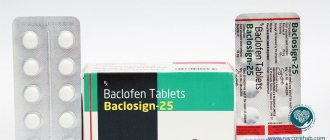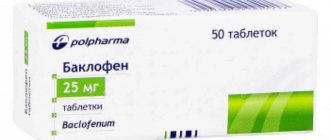How does addiction occur?
The state of drug intoxication causes a feeling of euphoria in a person, allows you to “switch off”, forget about pressing problems and worries, relieve pain, stress, and psychological tension. Not only do you not want to return to a natural sober state, but sometimes it is simply impossible. All the thoughts of the addict are focused on searching for the drug and taking the next dose, that is, on returning to the state that they experience under the influence of the toxic substance.
Addicts will not use the services of doctors on their own; they need help from relatives or friends.
Unfortunately, most drugs very quickly cause not only psychological, but also physical dependence. When the effect of the substance ends, the drug addict begins to experience withdrawal - extremely unpleasant physical sensations, which can be eliminated in two ways - by taking another dose of the drug or by removing the drug from the body with the help of medications.
Drug addiction is a sensitive topic, so addicts never go to doctors voluntarily and try in every possible way to hide their addiction from loved ones and family members. With each subsequent dose, tolerance to the substance used increases, and you have to increase the dose to achieve the desired effect. At some point in the development of drug addiction, the harm to the body becomes critical - the person simply dies, as his organs and organ systems cease to function.
The first signs of health deterioration
Literally from the first dose, drugs begin their destructive effects. First of all, they interfere with the absorption of vitamins and minerals. Outwardly, this manifests itself as problems with skin, nails and hair. As calcium is removed from the body in large quantities, teeth begin to crumble and bones become brittle.
The protective functions of the immune system rapidly weaken with each dose, and the drug addict’s body becomes open to all possible infections and viruses. Quite quickly after starting to use psychotropics, sexual dysfunction occurs. Libido is greatly reduced, and even in the intervals between taking drugs, the desire for sex does not appear.
All this, together with regular headaches and nausea, sleep disturbances, muscle tremors and nosebleeds, are symptoms of the beginning of a total breakdown of the body and quite logical consequences of drug use.
What do drug addicts die from?
Drug addicts rarely live beyond the age of 30 - toxic substances quickly destroy the body and lead to death. But this is not the only way to the grave - even the first dose can be fatal. The following are the leading causes of drug-related deaths.
- Individual reaction of the body to the drug. Often a person tries drugs under the influence of acquaintances, who vividly describe the state of euphoria and convince them that it is not scary. But each body reacts to toxic substances differently. Often, during the first use of a seemingly insignificant dose of a drug, a person experiences anaphylactic shock or cardiac arrest.
- Substances of dubious origin. As you know, drugs cost a lot of money, and an addict cannot do without another dose. Therefore, drug addicts often buy low-quality substances with impurities of unknown origin. Impurities sometimes turn out to be no less harmful than the drug itself. The use of low-quality drugs regularly leads to the death of addicts, and just one dose can be fatal.
- Overdose. Regular use of a narcotic substance leads to the formation of tolerance to it, that is, over time the dose has to be increased. The drug addict is not able to independently calculate how much exactly the dose needs to be increased, which is why deaths from overdose among drug addicts are very common.
- Withdrawal. Depending on the type of drug, withdrawal may be more or less severe. There are often cases when the addict’s body, exhausted by regular drug use, simply cannot withstand the symptoms of withdrawal. That is why drug addicts should not be locked at home without the opportunity to take the drug - first they must detoxify the body by seeking help from professional doctors.
- Suicide. In a state of drug intoxication, addicts often lose control over their actions and thoughts, hallucinations and panic attacks occur. A person can unintentionally commit suicide, for example, by falling out of a window or throwing himself under a car, because he is not aware of what is happening to him and where he is. There may also be deliberate suicide, usually in a state of withdrawal. The addict feels extremely bad, does not have the opportunity to take the drug, so he sees the only way to end his torment - to take his own life.
- Non-sterile administration of the substance. Drug addicts who use together can use one syringe for everyone; there is a high probability of contracting AIDS, hepatitis, and syphilis. Even basic hygiene standards are not always observed when administering a drug; blood poisoning is possible.
It is not only the drugs themselves that are harmful to the body and fatal to the addict, but also associated diseases and complications.
In addition to intravenous methods of administering drugs, there are others - drugs are smoked, inhaled, etc. The harm of smoking and drug addiction affects the mucous membranes of the nose, throat, esophagus, lungs, and the condition of blood vessels.
Content:
- Harm from drugs: neurological and somatic complications:
- How drugs affect a person: behavioral and personality disorders.
1.1. Effect on the nervous system. 1.2. Cardiovascular complications. 1.3. Harm of smoking drugs: damage to the respiratory tract. 1.3. Other complications.
With any form of drug addiction, there is a progressive decrease in physical activity, extinction of drives, emotions, and needs. Vitamin deficiency, deficiency of macro- and microelements has a detrimental effect on all basic vital functions. But when talking about how drugs work, we must also consider the social consequences of addiction. The patient cannot fully communicate even with family members and relatives, not to mention society, which also does not have the best effect on the quality of life.
Don’t delay your visit to specialists
| Substance Abuse Treatment Services | Make an appointment |
| Consultation with a narcologist | First consultation is free |
| Treatment of drug addiction in a private clinic | Completely anonymous |
| Treatment of methadone addiction | Full range of treatment |
| Visit of a narcologist to your home | 24 hours a day |
| Spice treatment | Detoxification, rehabilitation and resocialization |
What substances are addictive
People become addicted not only to illegal substances, but also to the drugs they receive from their doctor. It is also possible to become dependent on medications that are not considered drugs or on alcohol.
The most common illegal drugs that are abused are;
- cannabis;
- hallucinogens (PCP, LSD);
- amphetamine;
- ecstasy;
- cocaine;
- crack;
- heroin
and this is not a complete list.
Among the drugs is a group of sedatives and painkillers. For example, benzodiazepines or morphines.
Consequences for the body
Drug use primarily affects the state of the brain; drug addiction leads to decreased intelligence, dementia, severe psychosis, and depression. The immune system suffers - the body cannot resist basic diseases and infections, even a common cold can cause complications that are incompatible with life. The harm caused by alcoholism and drug addiction to the liver is enormous - the inability of this organ to function normally leads to severe intoxication of the entire body. When smoking and inhaling psychotropic substances, lung cancer, bronchitis develops, and respiratory arrest may occur. The cardiovascular system suffers, arrhythmia appears, and the risk of heart attack increases.
Drug use has a huge impact on the reproductive system and sexual functions of both men and women. Sexual desire weakens, the sensitivity of the skin and mucous membranes decreases. The thing is that the amount of sex hormones is reduced. Men suffer from impotence, women from infertility. Women experience menstrual irregularities up to the complete absence of menstruation. If a person who uses drugs manages to conceive a child, there is a high probability of miscarriage, and the child will be born with mental and physical disabilities and will be developmentally delayed. If a woman uses drugs while pregnant or lactating, she causes irreparable harm to the health of the child.
What are hard drugs?
If the division of narcotic substances by severity is arbitrary, then which drugs are considered hard? Those whose consumption causes the most dangerous consequences for the body:
- ! mental disorders;
- ! very fast addiction, sometimes even after 1 dose;
- ! severe changes in internal organs.
Even after a rehabilitation course, a person’s health due to taking hard drugs will not be the same as before. This is why drug addiction treatment should be handled by specialists. The group of hard drugs includes natural and synthetic substances:
- heroin,
- amphetamine,
- cocaine,
- desomorphine,
- methamphetamine,
- methadone,
- pervitin,
- ephedrine,
- LSD,
- spice,
- salt.
Personal and social aspects
Drug addiction quickly leads to personality degradation. Family relationships collapse, marriages break up, the addict skips school and work, and is ultimately left without a livelihood. All savings are spent on purchasing the next dose. When the money runs out, the addict begins to sell his belongings and the belongings of family members, often descending to theft, followed by robbery and even murder. With such a lifestyle, there can be no talk of any employment or healthy family relationships. Often, drug addicts end up in prison or receive a suspended sentence, which significantly ruins their lives in the future, even if they manage to recover from addiction. You can also go to prison for possessing and manufacturing drugs.
Regular use of narcotic substances leads to decreased intelligence, memory impairment, and mental illness, which is why in the future, even after getting rid of addiction, a person cannot become a full-fledged member of society and becomes disabled. Drug use affects a person's appearance; drug addicts look much older than their years. To return to normal life, long-term rehabilitation with the support of loved ones is required. But often relationships with others deteriorate so much that the addict is left alone and, upon leaving the clinic, goes back to those with whom he can use.
Of course, relatives of an addict become codependent, sometimes without realizing it. A compassionate mother gives her son her last money, even knowing why he is asking for it. The wife covers for her husband, does not send him to treatment for drug addiction, is ashamed of the publicity, or hopes that he himself will give up drugs. A drug addict involves people around him in his addiction. Sooner or later, the problem is revealed, which harms the reputation of not only the addict, but his family. Living with the thought that someone dear to you has become a drug addict is very difficult; this problem is depressing and leads to depression; codependents can also lose their jobs or lose relationships due to constant worries and stress.
Codependency is also a problem that needs to be fought decisively!
Drug addicts are unable to help themselves - all responsibility falls on relatives and family members. If someone close to you is faced with this misfortune, his life is in your hands. Contact a drug treatment clinic as soon as possible and start fighting this terrible disease.
Dietary supplements inexpensively
Drug addiction is a whole complex of cause-and-effect relationships, a chain of decisions and their consequences for the person who decides to try a drug for the first time. Many people who take drugs for the first time out of interest, for company or for pleasure are most often confident that they will be able to stop after the first time. But practice shows that the effects of drugs on the brain, especially heavy ones, in 99% of cases cause persistent cravings and a desire to try the drug again after the first to fifth use. Next, a mechanism is activated that causes persistent physiological and psychological dependence on the drug, which can only be overcome with the help of medical help.
Free consultation right now!
Online consultation with a specialist on your issue!
License number: LO-77-01-019036
Classification by pharmacological properties
The narcotic effect can be expressed either as a result of stimulation of the nervous system, or, conversely, as a result of its inhibition. Therefore, drugs can be classified according to their effects on the body.
Opium analgesics
All opiates have a sedative and analgesic effect - they depress the nervous system, cause motor inhibition, and slow down reactions.
A strong physical and mental dependence on these drugs develops after the first use. On average, an opium addict lives about 3-5 years after the first dose.
Death most often occurs from drug overdose, liver disease, HIV and hepatitis infections (due to shared syringes and lack of hygiene during intravenous administration. In addition, the use of opium drugs leads to a severe decrease in immunity, venous disease, tooth decay, impotence, and dementia. Opiates cause the most painful withdrawal syndrome (withdrawal) among all surfactants.
Psychostimulants
Drugs that stimulate the activity of the brain and nervous system. These include amphetamine, cocaine, methamphetamine, etc.
Antidepressants
Sedatives in greatly increased doses can be used for narcotic purposes. By depressing the nervous system, they lead to impaired coordination, disorientation in space and detachment from all pressing problems.
In large dosages, these drugs quickly cause physical and mental dependence. Withdrawal syndrome from them can last for 3-4 months, manifesting itself in insomnia, irritability, apathy and suicidal thoughts.
Hypnotic
One of the most popular drugs is Phenazepam . Possessing a powerful sedative effect, in large dosages it causes changes in consciousness and hallucinations. Long-term use of the drug can lead to irreversible mental disorders.
As a result of taking pharmaceutical drugs (sedatives and hypnotics), severe brain damage occurs, similar to epilepsy, delusional states, and hallucinations. Death often occurs due to exhaustion of the heart muscle, liver destruction, an overdose of drugs, or as a result of withdrawal after abrupt withdrawal.
Hallucinogens
This group includes a number of drugs, very different in composition and origin, that can influence human consciousness, changing sensations and emotions and causing visual and auditory hallucinations.
- LSD (in slang - acid, red dragon, marks) is a completely synthetic substance that has a severe hallucinogenic effect. It can be in the form of powder, tablets or liquid, which is soaked into fabric or paper.
- Psilocybin (mushrooms, toadstools) - some types of mushrooms containing this substance can cause hallucinations. The biggest danger of this drug is its availability. Fungi grow all over the world and it is almost impossible to control their spread.
The consequences of using hallucinogens are a high likelihood of developing mental illness, personality disintegration, irreversible changes in the structure of the brain and central nervous system.
Long-term use of this drug leads to increased aggression, anger, and irritability. Often, addicts who use such substances die due to suicide or an accident resulting from altered consciousness and hallucinations.
Leave a request for a free consultation with a specialist
We will contact you as soon as possible
- — Anonymous
- - For free
- — Around the clock
Psychedelics
A group of drugs causes a change in thinking and perception. Some of them enhance the emotional sphere (ecstasy), others increase resistance to stress (bufotenine, TMA)
Dissociatives
The effect of these drugs leads to impaired consciousness and personal disorientation. These include ketamine, calypsol, phencyclidine, etc.
Opiate group
The most popular and long-used drugs are opiates. They are natural, obtained from poppy seeds, and synthetic, which contain chemical compounds. This is the largest group of substances that cause euphoria and have a significant negative impact on health.
- Poppy straw is crushed raw material obtained from poppy stems and pods. The poppy seeds themselves are not classified as stimulants, since they do not contain narcotic components.
- Acetylated opium is a dark brown solution with a vinegar odor. It is obtained as a result of a combination of chemical compounds with plants and the reactions occurring in them. This is a ready-to-use drug.
- Raw opium is juice from the poppy plant treated with special compounds; it is used as a basis for preparing an acetylated solution. The substance itself looks like a plasticine mass of different shades from white to brownish. Buy the mass in the form of balls.
- Methadone is a synthetic substance of the opium group, potent and more dangerous than the previous three types. External forms are powder or solution. Procopsiphene and meperidine also fall into this category.
- Semi-synthetic opiates are heroin, hydromorphine and codeine.
- Desomorphine is a new and cheaper narcotic psychotropic than heroin. It is produced illegally in makeshift laboratories from codeine-containing medicines. It has a catastrophic effect on health and completely destroys the body in a short period of time.
Cannabinoid group
These drugs are obtained from hemp. The most common drugs in this group are marijuana, anasha and hashish. In the drug community they are called weed and plan. Weed is a mixture of hemp leaves, seeds and flower heads. Resin is obtained from the mature tops of the plant, which is hashish.
The most common way to consume cannabinoids is through inhalation through smoke while smoking. Marijuana in some countries is considered a non-hazardous psychostimulant. This is due to the fact that the first doses do not cause negative consequences. But this happens until a persistent addiction to weed has developed. And after addiction takes root, a person experiences the same problems as with stronger drugs.
Drug addiction is a particular threat for the younger generation
The rapid spread of drug addiction among adolescents and young people has several main reasons.
These include:
- The desire to receive new and strong sensations.
- Self-affirmation in society.
- Imitation of elders, idols.
- Conflicts in the family, places of study and work.
- Staying in youth subcultural groups.
- Protest against the existing rules of life, characteristic of a young age.
The first doses almost immediately begin to destroy the health and life of a novice drug addict. The vice is progressing at tremendous speed. The drug quickly becomes addictive, requiring its quantitative increase during use, otherwise the euphoric effect does not come. Soon, an attempt to quit drugs begins to cause withdrawal symptoms, which become more and more painful.
As part of the breakdown appears:
- Dysphoria (low mood).
- Depression.
- Moral and spiritual devastation.
- Emotional instability.
- Resentment towards yourself, towards others, and towards the whole world in general.
The personality develops degradation with a narrowing of the range of interests, with internal devastation and the disappearance of normal life goals. It is this problem that begins to strike the patient’s loved ones. The destruction of mental and physical health continues to rapidly increase. This can only be dealt with through long-term rehabilitation in a clinic where medication and psychotherapeutic assistance will be provided.









